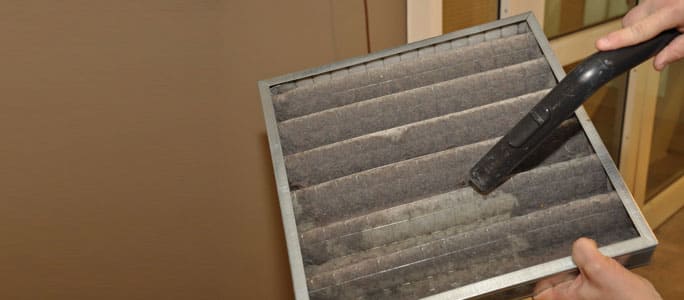
Contemplating coverage?
Subscribe to receive our emails & get
$200 OFF!
Have questions?
Call us: (833) 544-8273


Written By Ellie Brooks
Homeownership is exciting and comes with maintenance responsibilities, like cleaning gutters, mowing the lawn, and changing HVAC filters. The latter is what we are going to discuss here today.
With HVAC systems accounting for approximately 40% of the total energy used in commercial buildings and nearly half the energy in residential homes, maintaining clean filters has never been more crucial for both your wallet and the environment. A clogged filter causes systems to use 15 percent more energy, according to the U.S. Department of Energy, which can significantly impact your utility bills in today's rising energy market.
The general recommendation for how often to change hvac filters is once a month, and many homeowners will replace the batteries in their smoke detectors at the same time. This regular maintenance step will ensure that the air conditioner or HVAC system is working at top condition without having to work harder than necessary.
According to recent industry analysis, there will be more than 151 million HVAC systems supplied worldwide in 2024, with the industry projected to see annual growth of 7.4% in its market share from 2024 to 2030. As systems become more advanced, proper filter maintenance becomes even more critical to maintaining their efficiency and warranty coverage.
There's a reason Liberty Home Guard was rated the #1 Home Warranty Service by U.S. News and World Report for 2021, 2022, 2023, and 2024. Check out our services.
Learn MoreReplacing a furnace filter is easy, but if it's your first time, start by checking the owner's manual for specific instructions. This will help you identify the correct filter size and shape—important details that vary by system. For older homes without a manual, you can determine the right filter by inspecting the one currently in use
Also, if you do not follow the recommendations given by the manufacturer, you could be voiding any warranty or any HVAC warranty plans that may have come with the unit and your home. The owner's manual should also advise you how to change the HVAC filter, but if not, we offer the following general instructions:
There are reusable filters for air conditioners and HVAC systems these days. They are more expensive to purchase, but they are reusable because they can be washed and returned to the system, thus getting your money's worth.
A window AC unit filter is much easier to get to than an HVAC system. You simply, but carefully, pull off the front grill and the filter will either snap out or is pulled up or down. Rinse it with nothing but clear water in the bathtub, kitchen sink, or outside with a water hose. Allow it to stand upright where it can dry then return it, following the same steps in reverse.
After you have removed the filter through the access panel as instructed above, simply run clear water through it in the bathtub, kitchen sink, or in the yard with a water hose. You want the water to have force, but not too strong as to rip a hole through it. Then set it someplace where it can dry, and then return it to the HVAC system.
A dirty filter not only spikes your energy consumption by up to 15% but can also compromise the longevity of your system due to increased wear and tear. With up to 3 million heating and cooling systems being replaced every year in the U.S., proper maintenance through regular filter changes can help extend your system's lifespan and avoid costly replacements.
If you have a home warranty plan, like those offered by Liberty Home Guard, check with your policy to see if filter changing or cleaning is covered by the policy before you begin. If not, you should inquire how you can get full HVAC coverage that does offer this service.
Most HVAC filters should be changed every 1-3 months, depending on usage, home size, and air quality. Standard 1-inch filters typically need monthly replacement, while thicker 4-5 inch filters can last 3-6 months. Homes with pets, allergies, or high dust levels may require more frequent changes.
Yes, most homeowners can replace a fan with basic tools, safety precautions, and step-by-step guidance.
Yes, significantly. According to the U.S. Department of Energy, a clogged filter causes HVAC systems to use 15% more energy. Since heating and cooling account for nearly 50% of home energy use, this can add $200-400 annually to your utility bills depending on your home size and local energy costs.
Neglecting filter changes leads to reduced airflow, forcing your system to work harder and consume more energy. This can cause premature equipment failure, poor indoor air quality, uneven heating/cooling, and potentially expensive repairs. In extreme cases, it can cause your system to overheat and shut down completely.
Stay Ahead of Potential
Home Mishaps!
Subscribe to our Liberty Home Guard Newsletter and gain access to exclusive content that ensures your peace of mind.